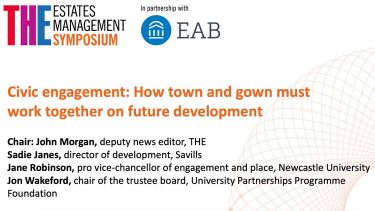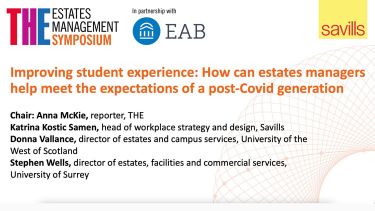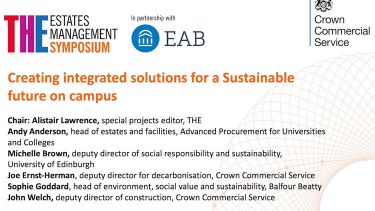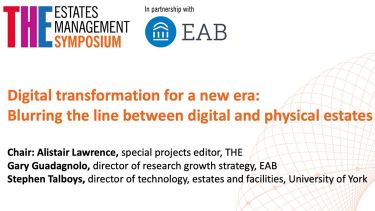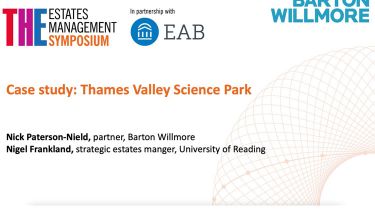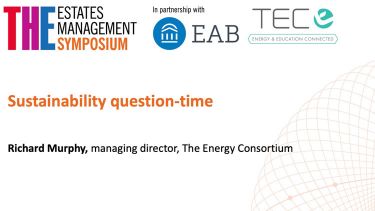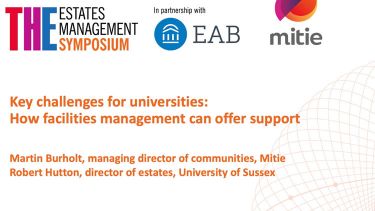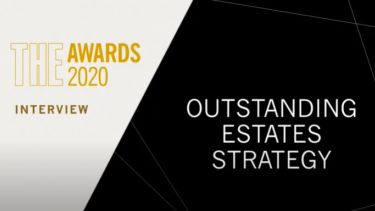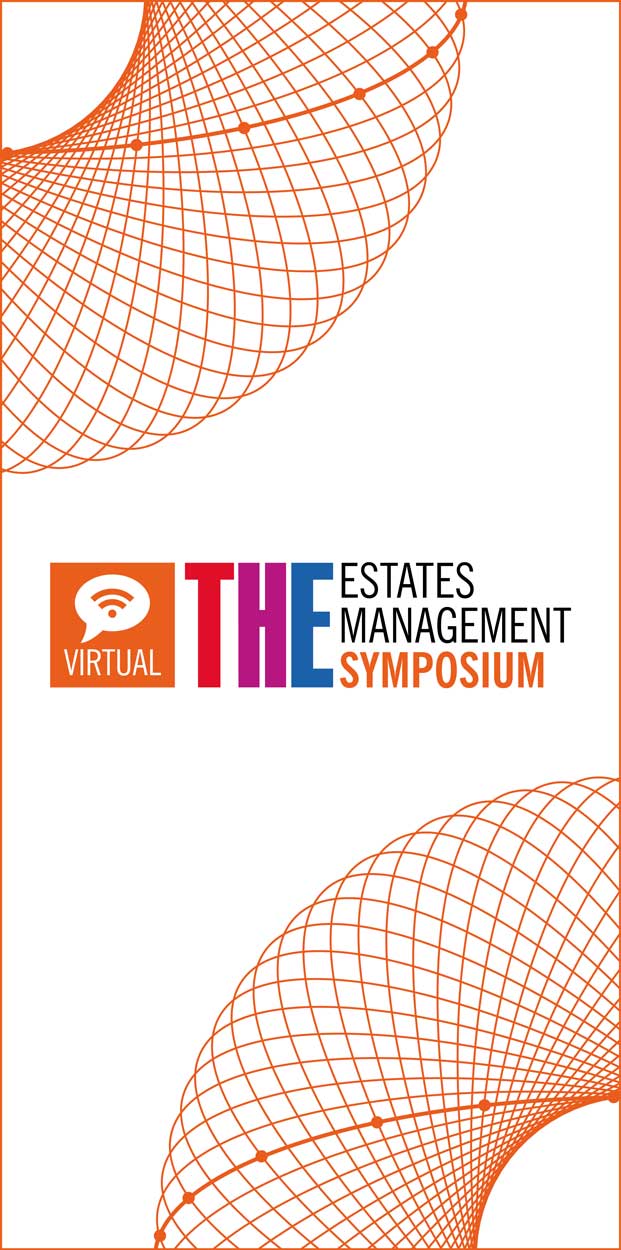Campuses need to shift towards low-carbon technologies, but there are hurdles to overcome for universities to reach their green goals
Universities should seek solutions with civic partners and be prepared for regulation and cost challenges as they build towards a sustainable future.
At a panel for the THE Estates Management Symposium 2021, in partnership with law firm Shakespeare Martineau, industry experts discussed how higher education institutions were implementing green goals to reach net-zero emissions.
Chair Ruth Phillips, a partner at Shakespeare Martineau, said that with the UK targeting net-zero greenhouse gas emissions by 2050, universities were under increasing pressure to decarbonise campuses.
Andy Nolan, development and sustainability director at the University of Nottingham, said that in the past 10 to 15 years the university sector had tested various technologies to drive down emissions, from biofuels to wind.
“There’s a much bigger challenge around retrofits. A lot of universities have large estates that have been developed over many decades and centuries,” Nolan said. “Going forward, I think all the things that we have done are still valid. It’s [now] about scaling that up. Instead of doing small-scale solar, or small-scale heat networks, do these things at scale with other civic partners. It might be a neighbourhood hospital or a local college.”
Nolan said the University of Nottingham was trying to create a “culture of responsibility” and had launched a Green Rewards app, which encourages students and staff to make sustainable choices.
Jeremy Bungey, an independent consultant at Woodlea Projects, said heat was one of the most difficult areas to decarbonise. He referenced a recent White Paper from the UK government that suggested that gas boilers should be phased out by the mid-2030s, with heat pumps likely to be a popular replacement.
“The district heating solution is a means of allowing these technologies to effectively plug into a network to transport heat across a campus, a town, a city,” Bungey said. “We're just starting to see local authorities and councils progressing large city-scale and town-scale distribution schemes, and this could play very neatly into the university campus – to work together in those communities to develop wider energy systems.”
The move towards lower carbon heating and more off-site renewable energy solutions is not without challenges. Sushma Maharaj, partner (energy) at Shakespeare Martineau, said universities needed to take a holistic approach to developing sustainability plans and deciding on energy solutions packages.
“This will very much be driven by the students of the university and the users of the campus. What experience do they want to have when they come to that university?” Maharaj said. “That already is a huge challenge as we come out of a post-Covid world. But even more so when we start to transition to low-carbon technologies.”
She said other challenges included proposed regulatory changes for heat and electricity sectors, the cost of heat electrification and funding, particularly for universities that do not qualify for government grants and loan schemes.
Universities have an opportunity to lead the way as society makes the vital transition to sustainable energy solutions. The path might not be clear, but the rewards will be great.
Watch the session on demand above or on the THE Connect YouTube channel.
Find out more about Shakespeare Martineau.
